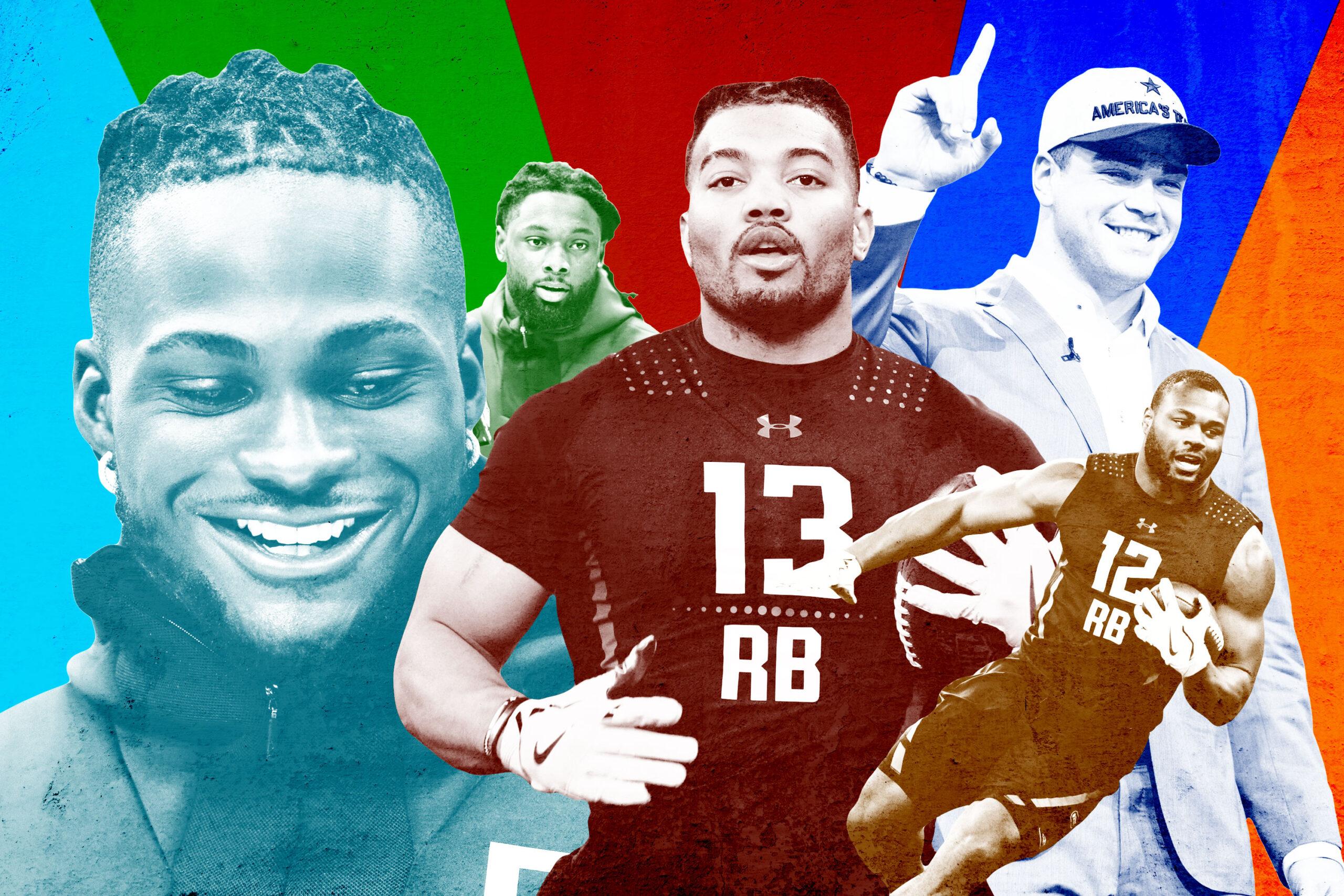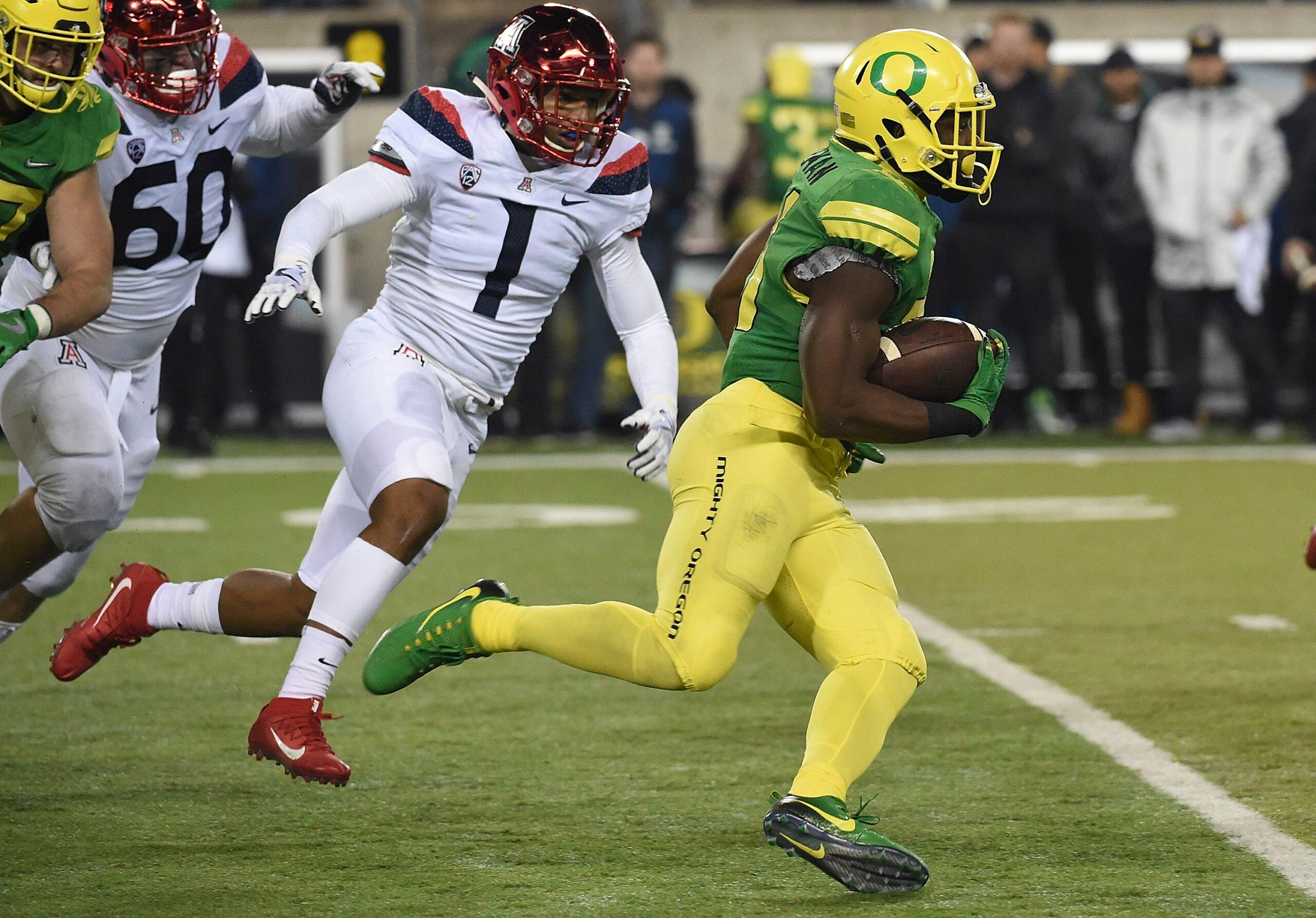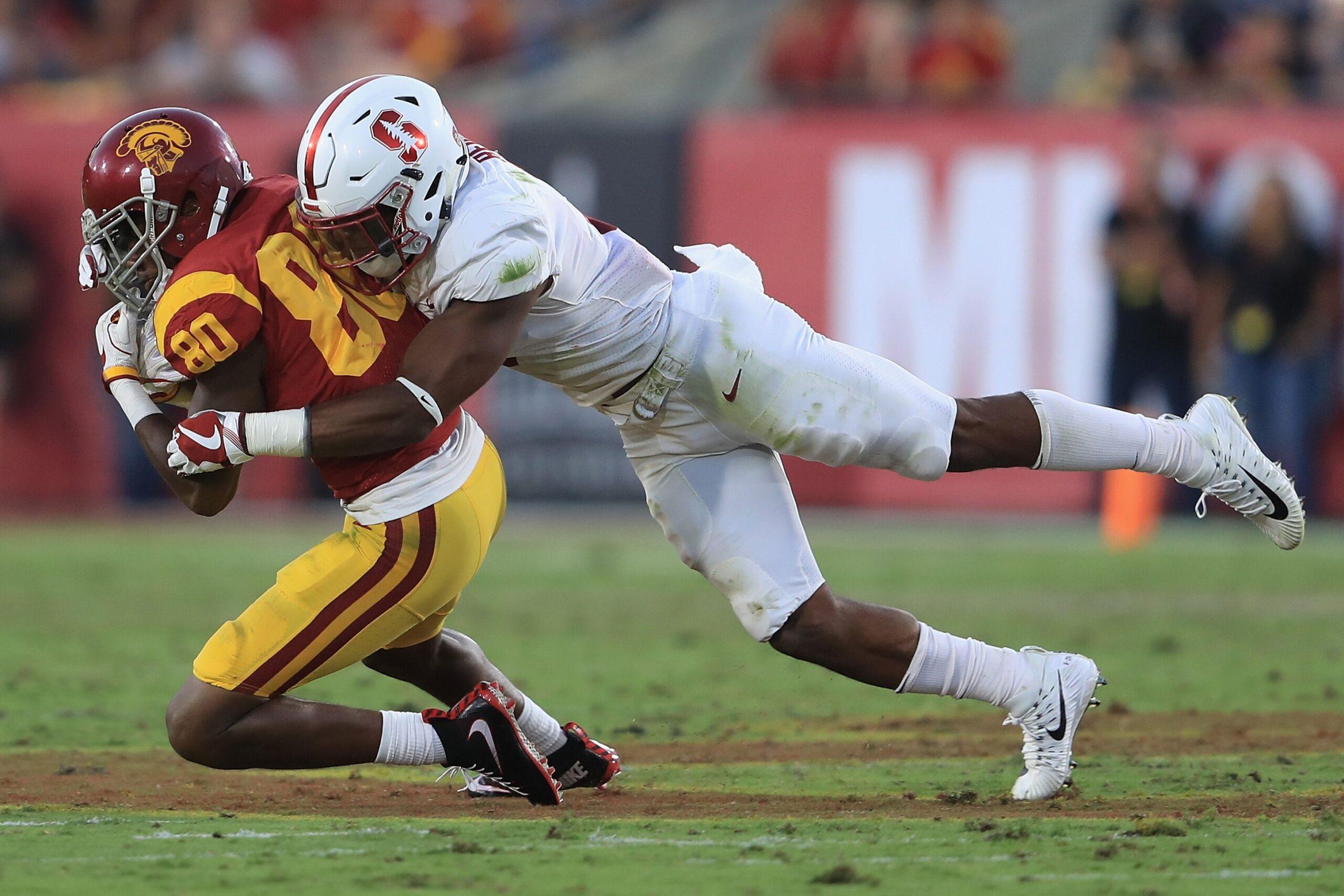
A few big-name rookies have dominated the post-draft hype. There’s Saquon Barkley, who the Giants are hoping is the catalyst to an Eli Manning renaissance; and Bradley Chubb, who could restore the Broncos’ pass rush to its former glory. Quenton Nelson could galvanize the Colts’ wretched offensive line. And Minkah Fitzpatrick and Derwin James each should shoot right to the top of the list of the league’s most versatile defensive backs. Oh, and any of the five first-round quarterbacks bring the potential to change the direction of their respective franchises.
But with so much attention heaped upon the stars of the draft class, plenty of other intriguing selections have flown under the radar. Here’s a few of the most underrated rookies: eight picks from days 2 and 3 who, because of talent, fit, and opportunity, should make a big impact for their new teams early on.
RB Derrius Guice, Redskins
Washington’s run game last year was, let’s say, less than inspiring. Led primarily by early-down backs Samaje Perine and Rob Kelley, the Redskins’ rush attack was 28th in Football Outsiders’ DVOA, tied for 27th in yards (90.5 per game), tied for 29th in yards per rush, and found pay dirt just 10 times (tied for 21st). The offensive line underwhelmed, finishing 21st in adjusted line yards, and neither Perine nor Kelly did much to help Washington overcome its lack of consistent blocking. Perine ranked 44th out of 53 eligible backs last year in Pro Football Focus’s elusive rating (30.5), forcing just 14 missed tackles on 175 totes. Kelley wasn’t much better, breaking 10 tackles on 62 rushes for a 34.0 elusive rating. (Alvin Kamara’s league-best elusive rating was 108.5, by the way.)
Guice, on the other hand, is what draft scouts might call a rolling ball of butcher knives. Vague character question marks reportedly caused him to fall into the second round, but the physical, tackle-breaking back brings to Washington an ability to create yards on his own. Guice forced 104 missed tackles combined in his three-year career at LSU, per PFF, and demonstrated a Marshawn Lynchesque ability to pick up positive yards despite lining up against stacked boxes on an absurd 73 percent of his carries.
New Redskins quarterback Alex Smith is at his best when he functions as the point guard of a balanced offensive attack — and a career year in 2017 was boosted, after all, by rookie Kareem Hunt, who led the NFL in rushing. Paired with explosive pass-catching specialist Chris Thompson in Washington’s backfield, Guice could help unlock the Redskins’ ground attack, particularly on first and second down, and should help the team achieve that much-needed balance on offense.
RB Royce Freeman, Broncos
Running backs C.J. Anderson and Jamaal Charles combined for 314 carries, 1,303 yards, and four touchdowns for Denver last year. They’re both gone now — Anderson was released, Charles is still unsigned — leaving a giant vacancy in Denver’s backfield.

Freeman will have to prove he can beat out Devontae Booker for the starting job, but don’t be surprised when the team’s third-round pick emerges as the lead back. At 6-foot and 229 pounds, the former Oregon back is a big, physical, downhill runner who racked up an absurd 60 touchdowns during his four-year college career. Freeman brings elusiveness and the ability to pick up yards after contact to the Broncos’ ground attack; he averaged 3.7 yards after contact per rush in college and avoided being tackled at first contact on 38.7 percent of his carries, sixth among the running backs in the class — and he’ll have plenty of chances to shrug off tackle attempts as a rookie.
OG Connor Williams, Cowboys
Dez Bryant is gone. Jason Witten is retired. Quarterback Dak Prescott is coming off a tough second-half slump. Put together, there’s plenty of uncertainty around the team’s passing game in 2018 — which means there should be no doubt that Dallas plans to run the rock this season … a lot.
Williams should be a big part of the Cowboys’ plan to recapture that smashmouth identity. The former Texas Longhorn has plenty of size (6-foot-6, 296 pounds), athleticism, physicality, and versatility. He was a tackle in college but is expected to compete for the starting job at left guard; dropping the second-round pick in between All-Pro left tackle Tyron Smith and All-Pro center Travis Frederick would put him in about as soft a landing spot as a rookie can hope for.
WR D.J. Chark and SS Ronnie Harrison, Jaguars
As if the Jaguars’ roster weren’t talent-packed enough, the team went ahead and added two potential early-impact players when it grabbed Chark in the second round and Harrison in the third. Chark fits the mold of a Jacksonville pass catcher perfectly: He’s a high-effort run blocker in space — a must for a team like the Jags, whose offense revolves around its rushing attack — and is dangerous down the field, where he put his 4.34-second 40-yard dash speed to use in catching 13 passes of 20-plus yards while racking up 549 yards on those throws, per PFF. Blake Bortles thrived throwing off of play-action last year and will now have the chance to launch play-action bombs downfield to one of the fastest players in the draft.
As for Harrison, the former Alabama standout projects as a long-term replacement for 30-year-old safety Barry Church, but don’t be surprised if he gets meaningful snaps as a rookie in big-nickel situations (a personnel group that features three safeties), especially against two- or three-tight-end sets. Plus, Jacksonville let nickel defensive back Aaron Colvin leave in free agency and replaced him with free agent D.J. Hayden, a former first-round bust who struggled last year for the Lions. If Hayden has a slow start to the season, the team could look to the versatile Harrison for some help; he’s shown coverage chops and instincts over the middle of the field, and is a strong run defender and blitzer.
S Justin Reid, Texans

The Texans went into the draft pretty set at safety, with incumbent free safety Andre Hal and new free-agent acquisition Tyrann Mathieu as projected starters. But in Reid, the team picked up yet another highly versatile defensive back, and the former Stanford star could see plenty of action early in his career — especially if Houston defensive coordinator Romeo Crennel uses his two new defensive backs in a variety of different, interchangeable roles.
Reid and Mathieu both project as safeties in Houston’s scheme, but it’s hard to put a label on either player, because they can each do a little bit of everything — play up on the line against slot receivers, pick up running backs and tight ends in their routes, blitz, lurk around the second level in a robber role, read the quarterback’s eyes to jump routes and pick off passes. The bottom line? With Reid, the Texans could field some very versatile three-safety looks — and it wouldn’t be surprising to see the rookie contribute from day one.
CB Carlton Davis, Buccaneers
The NFC South is going to be dominated again next year by big, playmaking pass catchers. For the Falcons, Julio Jones and Mohamed Sanu make for a formidable downfield duo; for the Saints, it’s Michael Thomas, Cameron Meredith, and Brandon Coleman; and the Panthers’ passing attack will now feature Devin Funchess and rookie receiver D.J. Moore. The Buccaneers badly needed to add some size and physicality to their cornerbacks group to match up, and while Davis was taken 10 picks after fellow second-round defensive back M.J. Stewart, the former Auburn Tiger could find himself playing the bigger role early on. Don’t be surprised if Davis supplants Ryan Smith as the team’s starter on the outside opposite Brent Grimes and is asked to body up and lock down some of the division’s bigger-bodied receivers.
Davis will have to curtail some of his grabbiness at the line and avoid getting called for too many pass-interference penalties, but he’s exactly the type of corner Tampa Bay’s been missing. He’s not afraid to press up at the line of scrimmage, has a knack for disrupting the timing and footwork of an opponent’s route, and has the size (6-foot-1) to get his hands into passing lanes from a trail position. Whether it’s in a rotational role or as the team’s starter, Davis could be a crucial addition to the Buccaneers defense in 2018.
DE Josh Sweat, Eagles
As the 130th overall pick, Sweat will have to make the most of a limited number of snaps as a rookie, playing behind Michael Bennett, Brandon Graham, Chris Long, and Derek Barnett. But a rotational role could actually allow the Florida State product to do what he does best: draw on his elite explosiveness to bring heat off the edge. And he’s bound to get plenty of one-on-one blocks playing alongside such a deep and talented group of pass rushers.
Sweat dropped in the draft due to reported concerns over a previous knee injury and a lack of top-tier production in college. But he frequently lined up on the inside shoulder of opposing tackles in college, and that alignment sapped some of his ability to explode forward as a pass rusher — so he seems like a perfect fit for the Eagles’ wide-9 rush technique, which places him well outside the tackle’s shoulder before the snap and could tap into Sweat’s natural speed and quickness.

